
A
t the small elementary school in Jouy-sous-les-Côtes, in northeastern France, Gisèle Marc knew the rumor about her: that her parents were not her real parents, and her real mother must have been a whore. It was the late 1940s, just after the war, a time when whispered stories like this one passed from parents to children. Women who were said to have slept with occupying soldiers—“horizontal collaborators”—had their heads shaved and were publicly shamed by angry crowds. In the schoolyard, children jeered at those who were said to be born of “unknown fathers.”
The idea that Gisèle might have been abandoned by someone of ill repute made her terribly ashamed. At the age of 10, she gathered her courage and confronted her mother, who told her the truth: We adopted you when you were 4 years old; you spoke German, but now you are French. Gisèle and her mother hardly ever talked about it again.
Gisèle found her adoption file, hidden in a drawer in her parents’ room, and from time to time she snuck a look at it. It contained little information. When she was 18, she burned it on the stove. “I said to myself, If I want to live, I have to get rid of all this,” she told me.
Gisèle is 79 now, and she does not regret burning the papers. For a time, she was able to put aside questions about her origins. At 17, she took a job in a children’s home and hospital and realized she had found her calling. She spent her career working mainly in day-care centers, and eventually founded her own. In 1972, she married Justin Niango, a chemistry student from the Ivory Coast. They bought an old hotel just behind Stanislas Square in Nancy and turned it into a house.
I visited Gisèle there in June. It was easy to imagine the vibrant family life that once took place inside: her children—Virginie, Gabriel, Grégoire, and Matthieu—running up and down the stairs and playing instruments in their rooms. At school, they were sometimes the only Black kids in their class. Gisèle has a lot of stories about the cruel comments made through the years; all the stories end with her confronting the culprit.
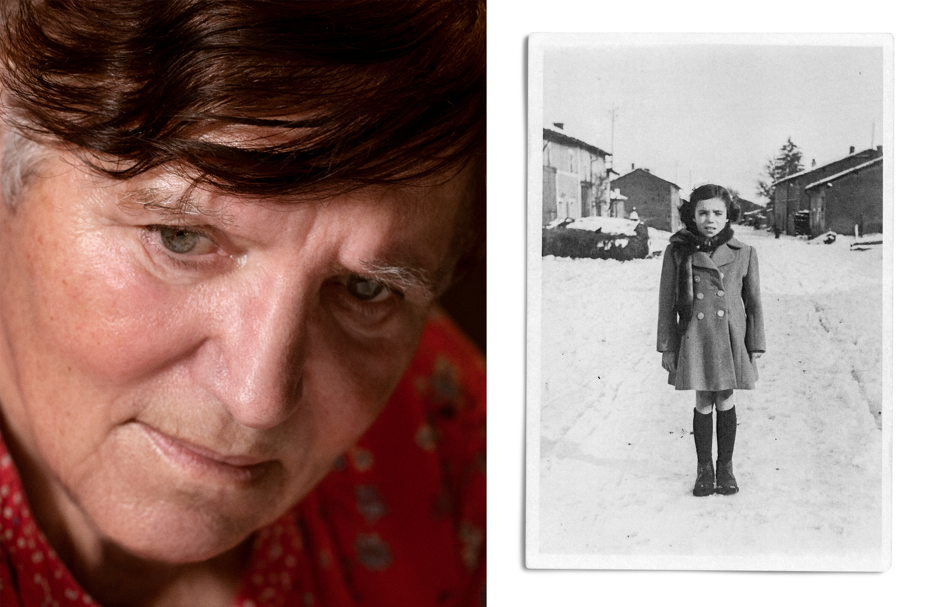
Gisèle held off on telling her children that she had been adopted, because she was worried that the revelation might weaken their bonds with her parents. Sometimes, though, the secret “burned a bit.” She knew she would share it eventually.
When her mother died, in 2004, she gathered her children and told them. They were shocked, and asked questions whose answers she did not know.
After years of denial, Gisèle longed to find those answers. She remembered the name and place of birth that had been listed in her burned adoption file: Gisela Magula, born in Bar-le-Duc, in northeastern France. She started her research there, and went on to write to the Arolsen Archives, the international center on Nazi persecution, in Germany, to ask if there was any mention of her in the organization’s extensive records.
In March 2005, Gisèle received a reply: She had not been born in Bar-le-Duc after all, but near Liège, Belgium, in a Nazi maternity home at the Château de Wégimont. That home and others like it had been set up by the SS, an elite corps of Nazi soldiers, under the umbrella of the Lebensborn association, through which the regime sought to encourage the birth of babies of “good blood” in order to hasten its ultimate goal of Aryan racial purity.
Everything Gisèle believed about herself wavered. The family she’d spent her adult life defending against racism, she realized, descended from one of history’s darkest racial projects.
N
azism was an ideology of destruction, one that held as its primary aim the elimination of “inferior races.” But another, equally fervent aspect of the Nazi credo was focused on an imagined form of restoration: As soon as they came to power, the Nazis set out to produce a new generation of pure-blooded Germans. The Lebensborn association was a key part of this plan. Established in 1935 under the auspices of the SS, it was intended to encourage procreation among members of the Aryan race by providing birthing mothers with comfort, financial support, and, when necessary, secrecy. The association’s headquarters were in Munich, in the former villa of the writer Thomas Mann, who had left Germany in 1933. In 1936, it opened its first maternity home, in nearby Steinhöring.
The SS was overseen by Heinrich Himmler, who hoped that its elite soldiers would serve as a racial vanguard for a revitalized Germanity. “As far as the value of our blood and the numbers of our population are concerned, we are dying out,” he said in a 1931 address to the SS. “We are called upon to establish foundations so that the next generation can make history.” An agronomist by training, Himmler supervised this undertaking with a level of attention that bordered on voyeurism; initially, all SS leaders’ marriage applications had to be referred to him. All were expected to reproduce: Four children was considered “the minimum amount … for a good sound marriage.” Himmler had no problem with childbearing outside marriage, and criticized the Catholic Church’s hostility toward illegitimate births. Raising “illegitimate or orphaned children of good blood” should be an “accepted custom,” Himmler wrote. In 1939, he issued an order that called on members of the SS to procreate wherever they could, including with women to whom they were not married.
According to Himmler, the Lebensborn homes were intended “primarily for the brides and wives of our young SS men, and secondarily for illegitimate mothers of good blood.” But the latter were, in practice, a majority. Far from the eyes of the world, single mothers could give birth in Lebensborn homes and, if they wanted to, abandon their babies, who would receive the best care before being placed in an adoptive family—so long as the biological parents met the racial criteria (photos of both were required). Early applicants had to meet a height requirement, and had to prove their racial and medical fitness going back two generations. The German historian Georg Lilienthal found that initially, fewer than half of the women who applied were accepted.
Lebensborn employees took note of how the mothers behaved during childbirth, and required them to breastfeed their children if they could. “The woman has her own battlefield,” Adolf Hitler said in 1935. “With every child she brings into the world, she fights her battle for the nation.”
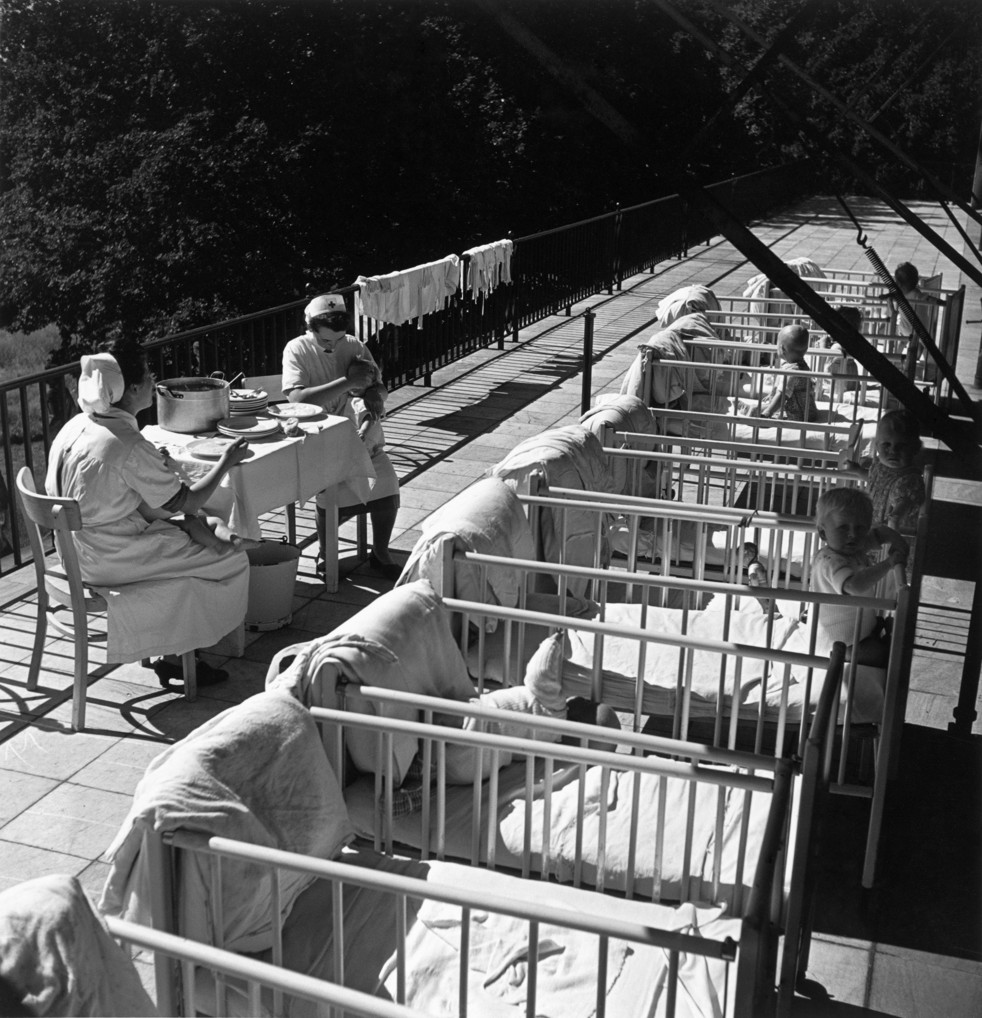
The women also received a daily “ideological education,” according to the historian Lisa Pine. Some of the babies were given a non-Christian first name by Lebensborn staff in a ceremony inspired by old Nordic customs. Under a Nazi flag and a portrait of the führer, in front of a congregation, the master of ceremonies would hold an SS dagger over the newborn and recite this creed: “We take you into our community as a limb of our body. You shall grow up in our protection and bring honor to your name, pride to your brotherhood, and inextinguishable glory to your race.” Through this ceremony, they believed, the child became a member of the SS clan, forever linked to the Reich.
By October 11, 1943, when Gisèle was born, there were about 16 Lebensborn facilities throughout Nazi-occupied Europe. She arrived four days too late to have Himmler as her godfather; the Reichsführer personally sponsored the children who shared his birthday, October 7.
One afternoon last spring, I sat with Gisèle in her living room, dozens of documents and photographs spread out before us. A short woman whose white hair is shot through with a streak of brown, Gisèle is at once reserved and straightforward, with a wry sense of humor. “Himmler really bungled with me,” she joked, referencing her marriage to an African man and their mixed-race family.
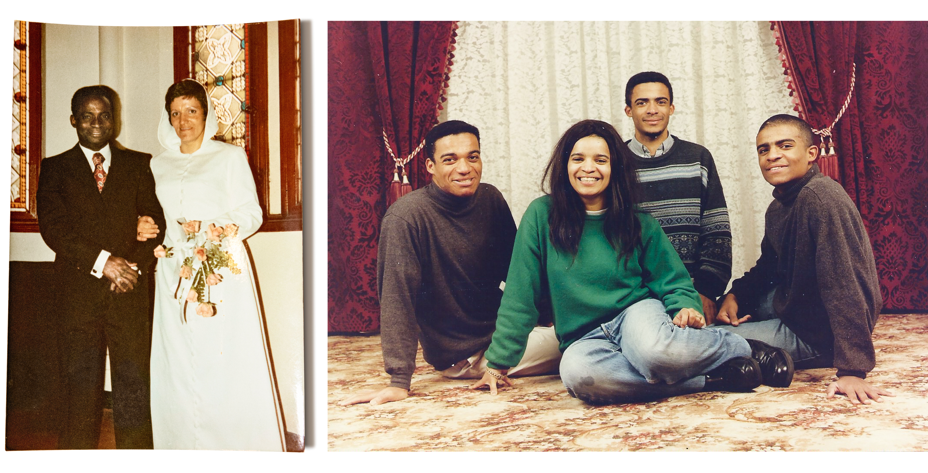
Gisèle rejects the idea that there’s a connection between her career and her early years spent in a very different kind of day care—she chose her path, after all, long before she knew where she had really come from.
Still, she doesn’t minimize the fact that her life story is inextricable from the history of Nazism. She has often wondered how her origins might shape what she calls her “internal memory”: She has always been terribly afraid of military trucks, trains, and leather boots. She cannot bear to hear babies crying; at her day care, she would often leave her office to comfort the little ones. She worries, too, that she somehow passed something evil on to her children through her genes.
A chance encounter helped Gisèle trace her origins. A few months after her mother’s death, just as she began her research, her cousin went to a funeral where a tall man with blond hair gave a eulogy for the departed, a teacher who had believed in him. The man, Walter Beausert, talked about his arrival in France as a child, in a convoy from Germany. Gisèle’s cousin, who was old enough to remember Gisèle’s adoption and knew that she’d come from Germany, struck up a conversation with Beausert after the funeral. Her cousin wondered whether Gisèle might have been in the same convoy.
Beausert was a Lebensborn child. A decade earlier, he had been the first person in France to testify about the Lebensborn, in a 1994 television report on his quest throughout Europe to find where he was born. Gisèle’s cousin put her in touch with Beausert, who soon helped Gisèle recover her own history.

The story that Gisèle has pieced together is still full of holes, but she now knows the identity of her biological mother. Marguerite Magula was a Hungarian woman who immigrated to Brussels with her parents and sister in 1926. Marguerite eventually went to Germany to work, with her mother and sister, in a garment factory in Saarbrücken. When she got pregnant, in 1943, she ran away and returned to Brussels. Dorothee Schmitz-Köster, the author of Lifelong Lebensborn: The Desired Children of the SS and What Became of Them, told me that by then, the Lebensborn program had somewhat loosened its criteria: A fervent belief in National Socialism could make up for being short, as Marguerite was, though an Aryan certificate, a health certificate, and a certificate of hereditary health were still mandatory for both parents.
Gisèle’s feelings toward Marguerite have changed over time. When she learned from the Steinhöring archives that some mothers had searched for their children after the war, trying to get them back, Gisèle came to hate her. “She never sought me out,” Gisèle said. “I have no compassion, nothing; quite the opposite. That’s not a mother.” A postwar document denying Marguerite’s request for Hungarian citizenship (she and her sister were then stateless) mentions her “bad life.” Had Gisèle and Marguerite met, maybe she could have explained. But Marguerite died in 2001, just a few years before Gisèle began her search.
Gisèle has been less curious about the identity of her father; she imagines him as the stereotype of an SS officer—undoubtedly “a bastard.”
In 2009, Gisèle met a half brother, Claude, born after the war, who was raised by Marguerite. They still visit each other from time to time. Claude, she said, describes their mother as having mistreated him. He once told Gisèle she was lucky not to have grown up with their mother.
L
ike Gisèle, Walter Beausert owed the discovery of his origins to chance. At the birth of his first daughter, Valérie, in 1966, the midwife stared at Beausert, then 22 years old. Behind his helmet of straight blond hair, she noticed his light-blue eyes—one of them was a glass eye that never closed—and remembered the 17 small children who had arrived by train at the hospital in Commercy in 1946. “I think you come from Germany,” she said to him. It confirmed something Walter had always suspected.
Walter was the only child in that convoy to France never to have been adopted. He grew up in children’s homes and became a guarded, tough teenager. Unusually for a Lebensborn child, Beausert was circumcised. He never knew why. “My father was obsessed with the search for his family. He looked for his mother all his life,” Walter’s daughter Valérie, now 56, told me when we met at an old art-nouveau brasserie in Nancy.
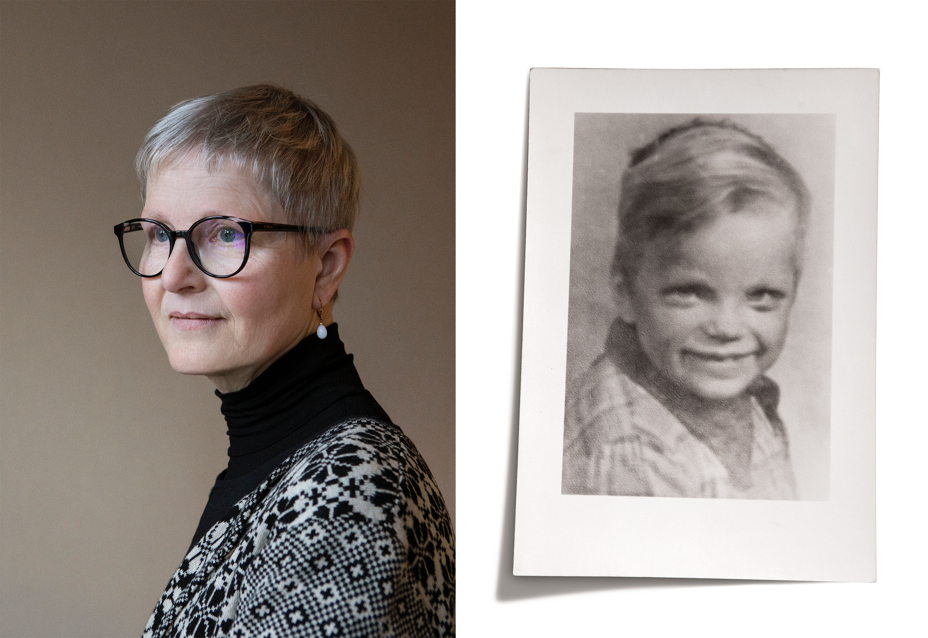
In 1994, while filming the television report about the Lebensborn, Walter traveled to the site of the former Lebensborn home at the Château de Wégimont, where he heard from locals about a woman named Rita, a Lebensborn cook, who had had a baby boy named Walter. As German soldiers tried to take Walter away from Rita, the story went, he was dropped and his left eye was injured. This was the lead the grown-up Walter had been waiting for—Rita, he came to believe, was his mother.
“Except that’s not true,” Valérie said. “We met this Rita; we know who this Walter is. He’s not my father. But he didn’t want to hear anything about it. He said Rita had a second child who was also named Walter. I told him, ‘This doesn’t make any sense.’ His denial was pathological.”
Valérie, who has the same light-blue eyes and straight blond hair as her father, was called a “sale boche”—“dirty Kraut”—at school during her childhood, just as her father had been called a “white rat.” In 1986, Valérie fell in love with a man who was a refugee from Vietnam. “My son’s father was the first person of color in our village,” she said. “But for me it was a nonissue. I felt like an outsider myself.”
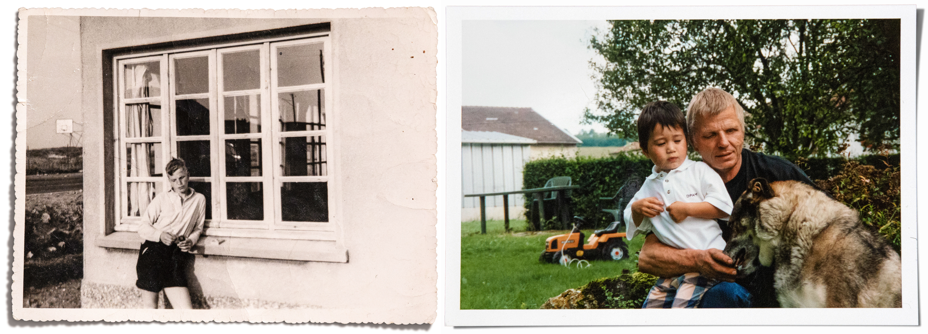
Their son, Lâm, was born with one brown eye and one blue eye. One eye—the blue one—presented with a deficiency. The doctor identified a congenital abnormality that could cause blindness, which Valérie also carried and had passed on to him. Her father’s glass eye, she realized, was not the result of an injury at all. “When my son had to undergo an operation, I told my father, ‘You see, it is congenital.’” Her father was outraged, Valérie recalled: “Nonsense! You can’t say that!”
It wasn’t just that Walter wanted to believe that his glass eye was the result of his biological mother’s struggle to protect him from German soldiers; he was also terrified of disease, of being “a carrier of defects,” Valérie said, and went to great lengths to prove his superior strength and stoicism. One day, while he was chopping wood, his friend’s chainsaw ripped through a trunk, cutting both of Walter’s calves to the bone. Walter made himself two tourniquets and drove home. Valérie remembers him walking up the stairs as if nothing had happened, both legs bloody, and calmly asking her to call an ambulance.
Walter found others’ fragility unbearable. When his wife, Valérie’s mother, was diagnosed with cancer, Valérie sometimes kept him out of her room. “He would tell her, ‘You have to fight; you must eat; that’s how you get better.’ It was a form of psychological abuse.”
To Valérie, this trait in her father was a troubling echo of the Nazi emphasis on physical superiority. “A young German must be as swift as a greyhound, as tough as leather, and as hard as Krupp steel,” Hitler proclaimed in 1935. Lebensborn children born with conditions such as Down syndrome, cleft lip, or clubfoot were thrown out of the homes, or killed.
Sometimes Valérie worries about what she, and her son, might have inherited from her father. “When I see some of my son’s character traits—a little tough, a little authoritarian—which could belong to my father but also to me, I always have this fleeting anxiety: Did we pass along something of the Lebensborn?”
I
n the summer of 1945, Life magazine published a report, with pictures by the photographer Robert Capa, on the “super babies” of a Lebensborn home. “The Hohenhorst bastards of Himmler’s men are blue-eyed, flaxen-haired and pig fat,” one caption read. “Too much porridge, plenty of sunlight have made this Nazi baby in hand-knitted suit and bootees so fat and healthy that he completely fills his over-sized carriage,” read another. “Grown pig fat under care and overstuffing Nazi nurses, they now pose to the Allies a problem yet to be solved.” The tone gives an idea of the level of resentment that Americans and Europeans felt in 1945 toward those who were spared the war’s horrors—even toddlers.
But not all Lebensborn babies were blue-eyed, flaxen haired, or even, for that matter, “pig fat.” Likely because of the lack of bonding with a single caregiver, some children were developmentally delayed. Medical exams performed after the war indicate that Walter was underweight. A document from French social workers describes Gisèle as having had tantrums upon her arrival in France.
For Gisèle and her fellow Lebensborn children, the Allies’ liberation of Belgium marked the beginning of a journey—in wicker cradles wedged in the back of military trucks—through a devastated Europe. In The Factory of Perfect Children, the French journalist Boris Thiolay recounts that German soldiers in retreat left the Lebensborn home near Liège on September 1, 1944, with about 20 toddlers. After several stops in Germany and Poland, the children found themselves at the very first Lebensborn, in Steinhöring. Walter Beausert had ended up there too.
In Steinhöring, SS officials were crammed together with children and pregnant women from other institutions that were now closed. Boxes of documents cluttered the corridors of the maternity ward, where women continued to give birth.
When the news of Hitler’s death broke, officials burned as many documents as they could. Thiolay describes the goals of this purge: “The birth registers, the identity of the children, the fathers, the organization chart, the names of the people in charge: everything must disappear. The evidence of the Lebensborn’s very existence must be removed.” But the Nazis’ obsession with documents made fully expunging the records an impossible task—there were too many.
A few days after Hitler’s death, a small detachment of U.S. soldiers arrived in Steinhöring, and the children changed hands: The Americans were responsible for them now.
Later in 1945, Gisèle and Walter were transferred to Kloster Indersdorf, nine miles from Dachau, where they were housed in a 12th-century monastery that had been requisitioned by the U.S. Army for the United Nations Relief and Rehabilitation Administration (UNRRA) to use as a reception center for displaced children. There, the Lebensborn children lived together with survivors: Jewish children who had made it out of the concentration camps, as well as Eastern and Central European gentile teenagers who had been forced laborers during the war.

The older children were encouraged to help the younger ones. A picture shows three small blond girls gently combing babies’ hair and spoon-feeding them as if they were playing with dolls. Another photo shows a group of babies on a checkered comforter under the watch of the American social worker Lillian Robbins and a Sister of Mercy. In the corner, sitting on the floor away from the other toddlers, is little Walter, one eye closed, smiling at the photographer.
The UNRRA staff tried to find the children’s surviving family members, if there were any, though some children had no recorded identity. Some were given an approximate birth date. This was perhaps what happened with Walter Beausert, whose official date of birth falls on a suspicious, though of course possible, date: January 1, 1944. His birthplace was unknown, but, likely because he was believed to have previously lived at a Lebensborn home in France, UNRRA staff decided to send him there from Indersdorf.
As for young Gisela, her file showed that she was born in “Wégimont” (omitting the château’s full name), which staff believed to be a French town. She joined Walter in the convoy bound for the Meuse region of France, whose population had never recovered from World War I. Gisela became Gisèle, and her life as a French child began.
W
ere they “survivors,” these toddlers who owed their existence to Nazi birth policy, who ate fresh fruit and porridge while other babies were gassed or starved to death?
On October 10, 1947, in Nuremberg, four Lebensborn leaders appeared before a special American military tribunal as part of the Subsequent Nuremberg Trials, which prosecuted ancillary Nazi leaders. Three charges were brought against them: crimes against humanity, war crimes, and membership in a criminal organization. Three out of the four leaders were found guilty of the third charge. But the tribunal established that the Lebensborn had been only a “welfare institution.” The children, therefore, were not considered victims.
Until the 1970s, Lebensborn homes were treated as a rumor, or described as stud farms where SS men mated with racially selected women. The first book to be published about Lebensborn came out in France in 1975 and contributed to this misunderstanding by suggesting that the “nurses” were in fact selected to be breeding mothers. Georg Lilienthal wrote the first academic work on the program, in 1986.
In the nine years the program lasted, at least 9,200 children were born in the homes. Some 1,200 were born in Norway, which had the most SS maternity homes outside Germany. After the war, these children, along with women who were suspected of having had affairs with German soldiers, were ostracized. Some of these women were even interned in camps. France had only one Lebensborn home, which operated for less than a year, so Lebensborn children there were far less likely to be recognized as such.
In 2011, Gisèle and Walter traveled to Indersdorf to join the annual commemoration held there by former residents of UNRRA’s reception center; Gisèle described the organizers as “Jewish children,” just as she still refers to herself as a “child of the Lebensborn.” “It was extraordinary” to be included in the ceremony, she told me. While she was in Indersdorf, she went to visit Dachau twice. She felt she needed to confront what she might have believed in had she been raised in an SS family.
Together, Gisèle and Walter started the Association for the Memory of Child Victims of the Lebensborn in 2016, an effort to encourage public recognition of Lebensborn children as victims of war.
Walter, for his part, became obsessed with gaining acceptance from the Jewish community. He studied the Torah and identified as a Zionist. “He used to celebrate Jewish holidays,” Valérie remembers. “His Jewish friends were a great help to my father. To tell him, ‘You are also a victim, Walter’ was the greatest gift.”
He died in 2021, wearing a Star of David around his neck. He had been in poor health, and living in a retirement home. A few days earlier, for the first time in his life, he had admitted that maybe Rita was not his mother.
Valérie has kept a comb that still contains her father’s hair. One day, she hopes to find out what secrets his DNA might contain.
G
isèle’s husband, Justin, died 15 years ago, but she still spends nearly every winter in Africa, in his village, where she is “famous,” she said, in part because residents saw her on TV, in a segment about the Lebensborn.
At home in Nancy, she keeps a photograph of her biological mother on display, though she doesn’t look at it much anymore. “It’s my heritage. I don’t want to forget that I was born from this woman,” she told me. All she wants now is for her story to be told. “I’m modest,” she joked. “I want the whole world to know about it.”
Her son Gabriel married a German woman, and her grandchildren speak German, a language she has completely forgotten. “It shows that history goes on,” she said. Her son Matthieu is working on a book about the Lebensborn, and with his wife, Camille, he wrote a play about the children’s story. Recently, I attended a reading at a small theater in Paris. I watched Gisèle, seated next to her daughter Virginie, as she watched her own story acted out.
“They say history is written by the victors,” one actor said. “But most of all, it’s written by the adults.” Gisèle discreetly dried her tears behind her glasses.







